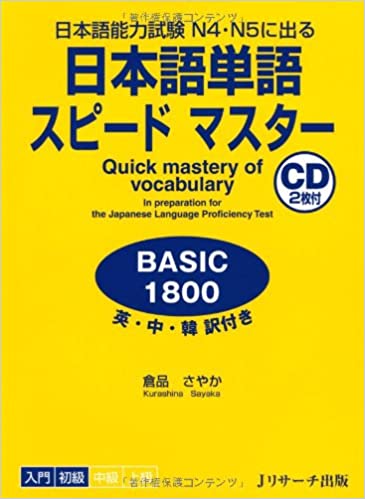
How to Learn Japanese: 13 Foolproof Steps to Get Fluent in Less Time
You want to speak Japanese now, like right now.
Obviously, you can’t learn a language instantly, but there are many ways to fast-track your language learning abilities.
I became fluent in Japanese even with a full-time job. What saved me time was knowing my goals, then working through a series of clear steps to reach them.
After the basics, it became all about keeping up the practice and doing plenty of immersion in Japanese.
Here are 13 tips to get you started on your journey to fast Japanese fluency!
Contents
- 1. Set Goals and a Time Frame
- 2. Commit to Specific Learning Resources
- 3. Learn Hiragana and Katakana
- 4. Learn Essential Japanese Vocabulary and Phrases
- 5. Learn the Most Important Japanese Grammar Rules
- 6. Recognize Common Kanji
- 7. Practice the SOV Sentence Structure
- 8. Watch Japanese YouTube Videos
- 9. Try Shadowing
- 10. Learn with Real People Online
- 11. Use Japanese Mnemonics
- 12. Think in Japanese
- 13. Build Habits and Keep Them Consistently
- And One More Thing...
Download: This blog post is available as a convenient and portable PDF that you can take anywhere. Click here to get a copy. (Download)
1. Set Goals and a Time Frame
Why do you want to learn Japanese?
Getting clear on this will help you prioritize what you need to learn.
If you’re looking to take a trip to Japan, you need to know phrases and vocabulary specific to travel and asking questions. If you’re doing business with Japanese speakers, you’ll need to learn language specific to your line of work.
These specifics will help you narrow down the vocabulary and material you need to achieve that goal.
You should also identify a time frame in which you’d like to accomplish certain goals. For instance, if you’re tackling hiragana for the first time, try saying “I want to learn hiragana in one week.”
However, it has to be something that’s actually achievable. A goal like “I want to memorize all 2,136 official kanji in one month” is highly unlikely to happen. It takes Japanese children 18 years to learn all of them!
Instead, try for “I want to learn 15 kanji per day.” Way more reasonable!
With a solid plan, you’ll be able to hit the ground running and make progress right away.
2. Commit to Specific Learning Resources
Having reliable and engaging resources is vital for keeping you on track during your studies—and they can also serve as a roadmap for you to follow.
You can commit to studying Japanese textbooks or audio resources every day. One great textbook for Japanese beginners is “Japanese for Everyone.” It introduces you to the most basic grammar structures all in kana, and conveniently includes the most basic introductions and pleasantries.
To round out your language learning, pair your studies with an effective language learning app. Many of these have progress trackers and can recommend lessons based on your Japanese level.
For example, FluentU allows you to watch and learn directly from Japanese videos.
It naturally and gradually eases you into learning Japanese language and culture. You’ll learn real Japanese as it’s spoken in real life.
Just take a look at the wide variety of authentic video content available in the program. Here’s a small sample:

You’ll discover tons of new Japanese vocabulary through these great clips.
Don’t worry about your skill level being an issue when it comes to understanding the language. FluentU makes native Japanese videos approachable through interactive transcripts.

Tap on any word to look it up instantly.
You’ll see definitions, in-context usage examples and helpful illustrations. Simply tap “add” to send interesting vocabulary words to your personal vocab list for later review.

FluentU even uses a learning program which adapts to your specific needs to turn every video into a language learning lesson and get you to actively practice your newly-learned language skills.

Start using the FluentU website on your computer or tablet or, better yet, download the FluentU app from the iTunes or Google Play store. Click here to take advantage of our current sale! (Expires at the end of this month.)
3. Learn Hiragana and Katakana
I highly recommend learning the hiragana and katakana writing systems before you start diving into learning words, phrases and grammar.
Knowing how to read and say the hiragana and katakana letters will tremendously improve your pronunciation from the start. Romaji (Japanese words spelled with English letters) might help you learn basic words like “hello,” but it will get in the way of your speaking skills if you start to rely on it.
Luckily, you can learn hiragana and katakana in a few hours.
Here’s a guide to get you started:
How to Learn Hiragana and Katakana Fast: the Complete Guide to Two Key Japanese Writing Systems | FluentU Japanese Blog
If you’re curious how to learn Hiragana and Katakana quickly, then you’ve come to the right place! Read this post to learn all about these two key Japanese writing…
4. Learn Essential Japanese Vocabulary and Phrases
Now that you know how to read Japanese, put your new alphabet skills to use by learning the most important Japanese words and phrases.
By “most important,” I mean the ones that will have the most impact on your fluency progress—such as the most commonly used words.
You can find tons of resources with these vocab words online by searching for “most commonly used Japanese words.” For example, this resource from iKnow! teaches you the most commonly used 6,000 words. Each webpage contains 1,000.
I also highly recommend our master list of core Japanese vocab:
The Master Guide to Our Japanese Vocabulary Lists: 1000’s of Words to Learn! | FluentU Japanese Blog
Grow your Japanese vocabulary with this complete list! Learn a huge variety of Japanese words by perusing these posts from all over the site. Learn every sort of word and…
No matter which resources you use, put your new words into a spaced repetition flashcard app like Anki. That way you’ll commit them to your long-term memory.
5. Learn the Most Important Japanese Grammar Rules
Once you’ve got a few words under your belt, it’s time to learn how to actually use them in sentences.
That means starting to learn Japanese grammar.
There are a few essential topics that impact every part of Japanese speech. These are the ones you should start with. Here they are with links to in-depth guides that will help you master them:
- Particles
- Pronouns
- Sentence Structure
- Verb Conjugation
- Past and Present Tense
- Adjectives
- Counters
- Asking Questions
- Te-form
- Adverbs and Frequency
6. Recognize Common Kanji
Let’s face it: learning kanji (漢字 — かんじ) is not the friendliest of tasks, especially with over 2,000 characters in regular use.
If your goal is fast fluency, you’ll want to focus more on learning to read kanji. It’s becoming less necessary to be able to write kanji, and more important to be able to spell it out in hiragana on a phone or computer.
While kanji can be daunting, it’s still highly important because of how linked kanji is to vocabulary. In fact, learning kanji and vocabulary at the same time is crucial because kanji often implies meaning.
Let’s look at the kanji for “day”: 日 (ひ).
We can combine this kanji with others to create longer words. When we combine 日 with the kanji 今 (いま), which means “now,” it makes the word “today”:
今日
now + day = today
Another example would be 会 (かい) — meet:
会話
meet + talk = conversation
会社
meet + in society = company
Once you learn a kanji, it can open up clues to a ton of other words. And the more kanji you learn, the more hints and clues you get with new vocabulary!
One great source for learning vocabulary is Sayaka Kurashina’s “日本語単語スピードマスター“ (にほんご たんご すぴーどますたー) — Japanese Vocabulary Speed Master.
This book shows you how to internalize the look, sound and meaning of the kanji. Also, since the vocabulary is grouped by topic, you’ll recognize recurring kanji in each chapter. You’ll be able to guess the pronunciation of new vocabulary, and more importantly, predict its meaning.
7. Practice the SOV Sentence Structure
Basic Japanese grammar is relatively simple after you learn a few of the fundamentals.
First of all, Japanese sentences have an SOV construction. So the subject comes first, then the object and finally the verb.
For example:
私はリンゴを食べます。
(わたし は りんご を たべます。)
“I eat an apple.”
Let’s break down this sentence word per word:
- 私 (わたし) means “I” or “me.”
- は is a Japanese particle that marks the word before it (私) as the subject of the sentence.
- リンゴ (りんご) means “apple.”
- を is another particle. It marks the word before it (リンゴ) as the object.
- 食べます (たべます) is our verb, which means “to eat.”
So if we look at our sentence again, 私はリンゴを食べます would literally translate as “I apple eat,” but the particles give you clues about the sentence structure.
Here’s another example:
彼は水を飲みます。
(かれ は みず を のみます。)
“He drinks water.”
If we break this down:
- 彼 (かれ) — he
- 水 (みず) — water
- 飲みます (のみます) — to drink
Can you see how the sentence construction is similar?
Master this basic sentence structure in Japanese, and you can go on to learn more vocabulary, particles and verbs to make more complex sentences.
8. Watch Japanese YouTube Videos
Hands down, full immersion is the way to go. If you’re in it for the speed, there’s nothing better than throwing yourself into the proverbial deep end and trying to keep your head above the kana (hiragana and katakana).
Since you likely already watch videos during your free time, why not get into Japanese YouTube?
YouTube is popular in Japan, and there are plenty of makeup tutorials, video game playthroughs, comedy skits and more made by Japanese content creators with hugely popular channels. Some Japanese videos have gone viral in the West, too.
With so much variety out there, there’s sure to be something that will capture your interest.
- ThatJapaneseManYuta is a great resource for actual Japanese study. He has street interviews with Japanese people about a wide variety of topics, including reactions to kanji tattoos and stereotypes, and also offers his own Japanese learning tips while explaining Japanese culture.
- Sushi Ramen [Riku] is a YouTuber who does bizarre builds and experiments. Some of his hits include hanging from the ceiling until his grandma notices him and pouring superheated salt into a watermelon. Many of his videos have English subtitles, so anybody can enjoy them!
- Hajime Syacho is one of the biggest YouTubers in Japan, and for good reason. His humorous videos show him doing all kinds of things, from eating the world’s largest gummy worm, to pranks, making giant slimes and more. While most of his videos aren’t subtitled in English, they do have Japanese subtitles, allowing you to practice reading and listening at the same time.
By watching Japanese YouTubers, you’ll get a feel for how Japanese people speak to each other as well as get accustomed to Japanese speech patterns.
9. Try Shadowing
Shadowing is when you listen to audio of words and phrases in a language, and repeat what you hear out loud. This is the basis of classic programs like Pimsleur and Michel Thomas, and it can help you pick up accurate pronunciation more quickly.
You can also shadow using textbooks, if they come with audio. It’s one thing to read and process, but it’s another entirely to get comfortable using the grammar in conversation.
Here’s a method for shadowing with textbooks:
- Listen to the passage without looking at the script
- Listen to the passage while reading along silently
- Listen while reading aloud with the audio
- Finally, close your book and try to repeat the phrases just a beat after the recording. (This gives your brain a second to comprehend what it just heard and to prepare you to repeat the sounds)
Reading aloud will increase your comfort and reading speed. And with audio resources to back you up, you’ll also be working on your pronunciation skills.
10. Learn with Real People Online
There’s no need to feel down when you hit a hurdle in your studies: every Japanese learner has been where you’ve been. That’s why it’s important to find a supportive learning community to help you along your journey.
Reddit has a huge Japanese learning community on r/LearnJapanese, which features learning resources, study tips and more. You’ll find everything from YouTube channels to flashcard decks, making it an infinite toolbox with every kind of tool you could ever hope for to help you learn Japanese fast.
HiNative allows you to ask native speakers specific questions about Japanese, as well as get feedback on your own sentences and writings—great for those doing self-study. So if you’re not sure whether to use は or が in that sentence, simply ask away, and a native Japanese speaker will gladly tell you. You can also return the favor by answering users’ questions about your native language, making it a true paradise for language exchange.
No matter how much grammar study and audio immersion you cram into your time, it’s hard to beat a real-life conversation. Once you’re feeling a bit braver with your Japanese, you should try getting a language exchange partner.
An online language exchange is a learning method where you speak Japanese with a real native speaker online, usually while also helping them practice English. You can find a language partner by using the resources mentioned above, as well as Tandem or HelloTalk.
11. Use Japanese Mnemonics
Let’s face it: Japanese is extremely different from English. But there’s a brilliant ray of light to make memorizing all those new symbols and words a snap: mnemonics!
A mnemonic is a tool to help people remember vast amounts of information. This ranges from rhymes to images to songs—anything can serve as a mnemonic device, as long as it helps you recall whatever you’ve been learning.
Plenty of mnemonic devices exist for helping newcomers learn hiragana, katakana and especially kanji, such as:
- The character ん looks like the letter n, so you know that ん makes the “n” sound.
- In kanji, 話 means “speak,” and is comprised of the radicals 言 (to say) and 舌 (tongue). Put them together, and you get “to say with the tongue”—AKA “speak!”
An even more effective way to commit Japanese to memory is to create your own mnemonics. Here are some suggestions to help you get started:
- Make stories to distinguish Japanese words that sound similar. Example: “The government stole money from my wallet” can help you remember the similar sounding words 政府 (せいふ)—government and 財布 (さいふ)—wallet.
- Create a song about grammar rules.
Example: The textbook series “Adventures in Japanese” has a song for helping memorize て forms, to the tune of “O Christmas Tree.”
- Use a spelling device to remember the order of Japanese vowels.
Example: “All invisible unicorns enjoy olives” can help you remember the Japanese vowel order, as the first letter in each word corresponds to a Japanese vowel (あいうえお).
Don’t be afraid to get creative. As long as whatever you use helps you correctly recall information, it works!
12. Think in Japanese
One of the fastest ways to train your brain to use Japanese is to think in Japanese.
This also allows you to practice using new words. That way, when you end up in a conversation in Japanese, you’ll be able to express your thoughts and find words much easier.
Here are some ways you can start thinking in Japanese.
- React in Japanese. Say you’re walking down the street, and you see a cute dog coming your way. Your first reaction is to think about how adorable it is. Instead of making that mental comment in your native language, make a conscious effort to go “あの犬はとても可愛いです.” (あのいぬはとてもかわいいです) — That dog is very cute.
- Describe your surroundings. On your commute to work or school, try reciting the Japanese names of things you see as you go by: car, bus, tree, store and so on. Don’t hesitate to go into more detail, either. How many cars are there? What color is that man’s shirt? What’s the weather like?
- Translate your conversations. After you’ve finished talking to someone, try to create a Japanese translation of your discussion. If you just placed an order with the barista, imagine that transaction taking place in Japanese.
The best part about thinking in Japanese is that you don’t have to worry about making mistakes in front of others. Your mental world is yours alone, and thinking in Japanese will enrich it tremendously. So there’s no need to be shy!
13. Build Habits and Keep Them Consistently
Find ways to replace your everyday habits (especially the things you do in your downtime) with Japanese learning habits.
We’re going to analyze your day and free up all that time that you think you don’t have:
- You do: Binge-watch HBO shows.
You could: Binge-watch Japanese dramas/movies/anime and write down five to 10 common new words per show
- You do: Zone out to music on your commute
You could: Focus like a boss with Japanese music/podcasts/textbook CDs in your ear, repeating and shadowing words and phrases if you’re in the car, and mouthing the words silently like a crazy person if you’re on the train or bus
- You do: Play games and browse social media on your phone
You could: Use these seconds to review vocab through a JLPT study app.
To really get going, you’ve also got to practice your skills and start talking to people as soon as possible. Have an energetic and hilarious conversation with your language buddy every day. Even if that conversation might be:
おはようございます!
Good morning!
おはよう!元気ですか?
(おはよう!げんきですか?)
Mornin’! How are you?
元気です!それは何ですか?
(げんきです!それはなんですか?)
I’m great! What is that?
これ?これはオレンジジュースです!
This? It’s orange juice!
いいですね!
Nice!
Even this pretty shallow conversation is a conversation. In Japanese. Did you understand it? Great! If not, pull out those textbooks and get going.
Roll all of these tips together and you’re going to find yourself heading for fluency at increasing speed, running with your momentum as you charge towards the rising sun (the Japanese flag)!
おはようございます!
Download: This blog post is available as a convenient and portable PDF that you can take anywhere. Click here to get a copy. (Download)
And One More Thing...
If you love learning Japanese with authentic materials, then I should also tell you more about FluentU.
FluentU naturally and gradually eases you into learning Japanese language and culture. You'll learn real Japanese as it's spoken in real life.
FluentU has a broad range of contemporary videos as you'll see below:

FluentU makes these native Japanese videos approachable through interactive transcripts. Tap on any word to look it up instantly.

All definitions have multiple examples, and they're written for Japanese learners like you. Tap to add words you'd like to review to a vocab list.

And FluentU has a learn mode which turns every video into a language learning lesson. You can always swipe left or right to see more examples.

The best part? FluentU keeps track of your vocabulary, and gives you extra practice with difficult words. It'll even remind you when it’s time to review what you’ve learned. You'll have a 100% personalized experience.
Start using the FluentU website on your computer or tablet or, better yet, download the FluentU app from the iTunes or Google Play store. Click here to take advantage of our current sale! (Expires at the end of this month.)






